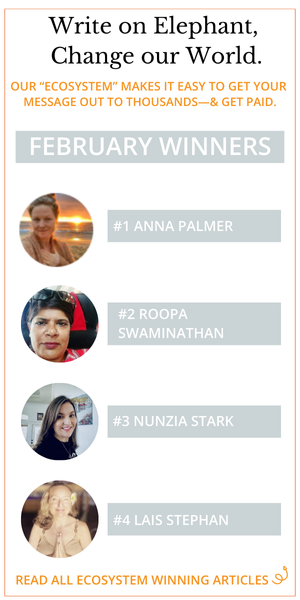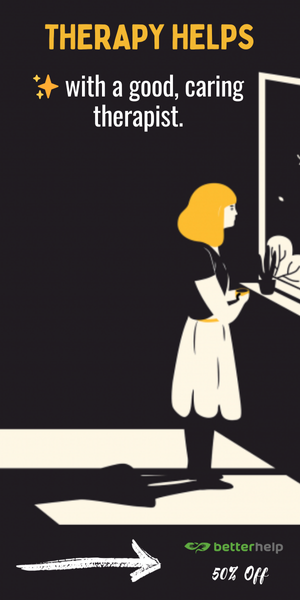“You’ve captured our relationship exactly. Promise me it’ll be on the cover.” -John Lennon
You know the photograph, don’t you?
The iconic Rolling Stone cover photograph of John Lennon and Yoko Ono. The one where she’s dressed in black, and he’s sky clad, curled around her, as if for warmth.
That.
That image, captured by Annie Leibovitz, is one of my relationship totems. I want that: a man who surrenders to me his truest, most trusting, most vulnerable self. In turn, I know I can be that woman for him: a source of warmth, strength, acceptance and love.
But there is another image, taken one moment before or after the well-known one.
In the famous photo, taken just hours before Lennon was killed, he’s in full profile, one arm cradling Yoko Ono’s head, as he presses a kiss onto her cheek, her face turned slightly toward him to receive it. His eyes are closed and hers are very nearly so as they share this embrace. The camera just happens to be present during a private, or leastways exquisitely intimate moment.
In the other photo, the one we don’t know, the one that isn’t part of our collective visual history, they are looking not at each other, but at us. And they face us fiercely. As soft and tender as they are in the image that we know, they are equally as steely in the other, united in their defiance of our gaze.
As they meet our eyes, they reverse that gaze and deny us the voyeuristic satisfaction of objectifying them, of rendering them a spectacle and their unconventional love somehow Other.
The first time I happened upon this alternative photograph from the Leibovitz shoot, I knew that I’d found, without knowing that I’d been seeking, the other half of my totem in this photograph, a spirit animal couple for interracial, gender role subverting love.
When I find my SomeOne, I hope that we’ll share both the soulful intimacy of that iconic embrace and, of necessity, the resolve and resistance captured in the other image, because ours, too, will be a different kind of love.
Even now, here in the Indian Summer of my quest to find Him, my kind, funny, beautiful SomeOne, I have to be at once openhearted and defiant.
Why? Well, most immediately, there’s a good chance that, like John and Yoko, we’ll be an interracial couple. From the time that I reached middle school, I knew that my liking a boy had much more to do with whether he was sweet and funny than with his racial or ethnic background. But I grew up in the South, where, even though the Supreme Court, in Loving v Virginia (1967), had struck down states’ antimiscegenation laws forbidding interracial relationships before I was born, such unions were and, even post Harry and Meghan, still are often frowned upon.
While we might conform to and comply with such cultural codes, we like who we like, and the crushes of my youth were from a range of racial, ethnic, and cultural backgrounds, as would be the loves of my adult life. It was years before I realized just how complicated my love life was going to be, however, not just because of whom I like, but how; it would be complicated by the very nature of the way I experience romantic and sexual attraction.
In my 20s, I found one possible language to describe myself and the men to whom I was attracted while reading relationship expert Dr. Patricia Allen’s work; it turns upon a single simple (arguably simplistic), but not necessarily easily realized, principle: there must be a balance of feminine and masculine energy in a relationship, more specifically one person must “be” feminine energy and the other, masculine energy. In a heterosexual relationship, according to Allen, it doesn’t matter which partner represents and expresses which energy, just that the complementarity is present. But it was clear in her early work that the gold standard couple was comprised of the traditional pairing: a feminine energy woman and a masculine energy man; in her 300-page book on relationships, only 10 pages were devoted to women like me, women who were drawn to what she calls “feminine energy men.”
(Please see “What’s Your Love Energy?” for explanations of these terms: http://www.eligiblemagazine.com/2013/04/10/whats-your-love-energy/ .)
Still, Allen’s book, rather the 10-page chapter related to the “role reversed” (RR) couple, became my touchstone as I kept my eyes open for the kind of gentle, sensitive man who was seeking a woman who would appreciate and cherish him just the way he was.
As my 20s gave way to my 30s, however, I realized there was even more to my story.
“I am, at heart, a gentleman.” -Marlene Dietrich
You see, I’d describe myself as a female beau, a straight, cisgender, femme presenting woman who’s romantically and sexually attracted to straight(ish), cisgender, male presenting men . . . but in a gender role reversed manner. Although there’s nothing “masculine” about my gender expression – I’m generally described as “warm and nurturing,” and I’m all about a flowy summer dress – relationally, by nature and nurture, I’m simply more suited to being the Provider and Protector, traditionally the roles assigned to a male partner in a heterosexual union, than the 21st century version of the traditional feminine counterpart, the Homemaker. So romantically, I’m the suitor; I pitch woo. And sexually? As my inner child somehow grew up to be a lovely gay man, I’m generally the “pitcher” or giver in intimate relations, too.
For years, on a host of dating sites/apps, I’ve tried to find the words to discreetly seek out the sort of soft energy, gender role eschewing, sexually receptive man who, at least in terms of his relational and erotic designs, would be my complement, the possible holy grail in my ongoing quest to find my companion and consort. The language that best captures my role reversed (RR) relational and romantic ideal is drawn, slightly paraphrased, from a blog, The Role Reversal Reader:
“It’s like wanting someone to be your girlfriend or wife. Except that someone is a lad and you’re a lady. But still.”
Those words remind me of a bit of lore about Lennon (or “Ono Lennon,” as he, a self-professed former misogynist, adopted his wife’s last name as part of his own); the story goes that the term “househusband” emerged because of his decision to take a hiatus from music, as he reportedly put it, to stay home to “bake bread and take care of the baby.” The RR Reader’s language also seems to me succinct and sweet, even romantic in a way. But expressing that, as delicately as possible, specifically in online personals profiles/dating apps, has drawn more than a few hurtful responses:
“What the hell did I just read?!!”
“Well, that wasn’t weird at all. Lol!”
And, most recently, less than a year ago, on a site whose members are meant to be committed to kindness and world peace?
“No wonder you’re single.”
The cruelty of that blindsided me. I felt defeated, and, for a time, I surrendered my quest. After all, it had gone on for so many years, and, although I’d found traces of Him in a few men who were complementary in critical ways, we were almost always, let’s just say, at cross purposes.
Except once.
He was a lovely, slightly younger, Mark Rylance/Sam Shepard (circa 1980s) lookalike who had, he told me, for years “yearned for” what I wanted to co-create: a committed, role reversed romantic and sexual relationship. In temperament, his gently buoyant energy was a lovely balance for my more earthy, contemplative nature. We complemented one another, figuratively and literally. Even though he was over six feet tall to my five-four, he fit perfectly in my arms, little spoon fashion. Practicing a form of sacred sexuality, akin to tantra, with me wearing what the Kama Sutra calls the “virile” woman’s yantra, he felt he was, at long last, loved and made love to in the way that he’d longed to be, was meant to be.
Soon, we were taking trips looking for bit of land to buy, a site upon which we could build our life together, a life in which traditional gender roles were reversed, inverted, then simply transcended. As a college lecturer and writer, I would make a living, and he would make a home: tending his garden, keeping house, cooking delicious meals, teaching yoga, and writing. It was my Vision Splendid. It was his, too. For a time.
There came a change of seasons, personally and geopolitically, however, and we had to part ways, but not before I came to know, in a profound way, that the sort of love I seek, for which the Leibowitz Lennon/Ono photographs had been my dialectical totem, is possible.
Just days ago, I did a deep dive into the photos of us as we traveled across the American South. Him: tall, lean, blue eyed and blond; me: short, curvy with cinnamon brown skin and dreadlocks. We saw people looking, doing a quick calculus in their heads as we walked by holding hands, looking first at our intertwined fingers, then at him, then at me, and back at our hands. Finding that we did not compute, sometimes their confused stares gave way to smiles, sometimes to barely concealed scowls.
When I look at those pictures of us now, at the way we are looking into the camera, I see it: the dialectic of love and defiance.
That is the inherent paradox when, in ways visible to the naked eye and not, you love outside the lines.
For every public moment when we found ourselves confronting the world’s gaze as an interracial couple, there were so many more private moments, lovely ones, as a RR one. On any given morning, there was my waking up to find him sky clad and wrapped around me as if for warmth, his face inches from mine, as he waited for me to open my eyes, to plant a kiss on my cheek, to whisper, “Good morning, Love.”
We’re not together now, but he remains a dear friend, and I like knowing he’s out there. So, too, are his kin, other beautiful, gender role transcending men.
And so am I. I’m out here, my love totems, the Lennon/Ono Leibovitz photos, in hand, defiantly hopeful, as my quest continues.
Ana X is a college lecturer and writer. When she’s not crafting scholarly articles and personal essays on matters related to gender, sexuality, identity, and relationships, or watching for seahorse-unicorns, she enjoys random displays of twinkle lights, bookstore/coffeehouse crawls, road trips, living room dancing, and the sea. Currently flying solo somewhere along the Atlantic Seaboard, depending on her mood, she occasionally tries to solve for “x” (and sometimes y) here https://twitter.com/AnaEverAfter or here https://twitter.com/TheAnaXFiles and www.justbeyondyourperipheralvision.com.
Browse Front PageShare Your IdeaComments
Read Elephant’s Best Articles of the Week here.
Readers voted with your hearts, comments, views, and shares:
Click here to see which Writers & Issues Won.






The Leibovitz photographs:
https://goo.gl/images/S9nYm5
https://goo.gl/images/QKEak4